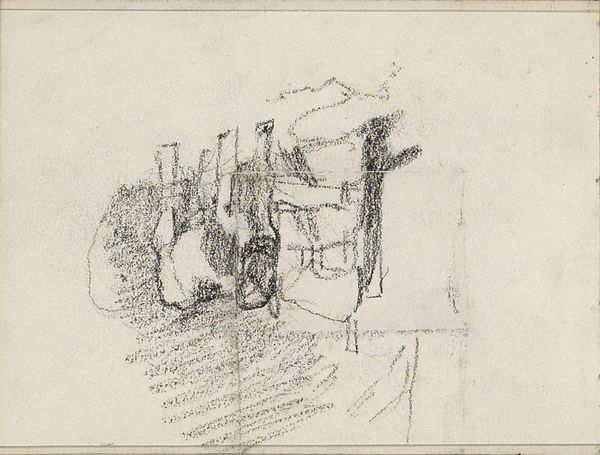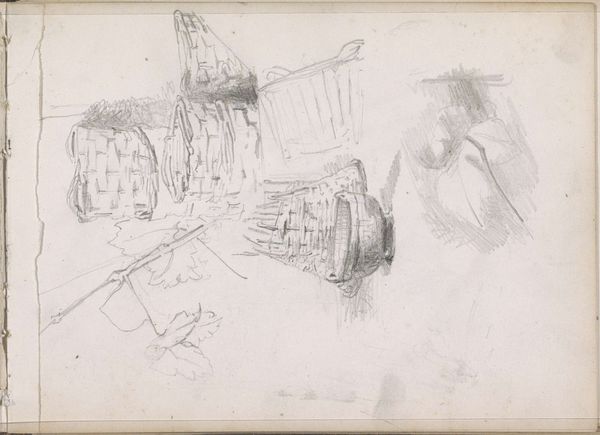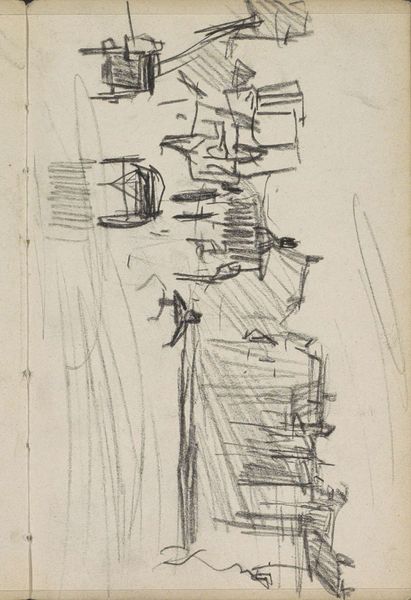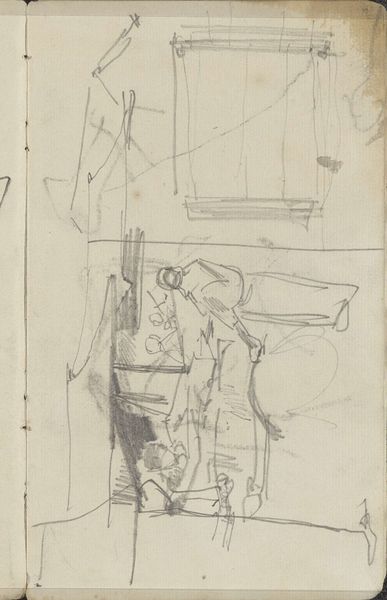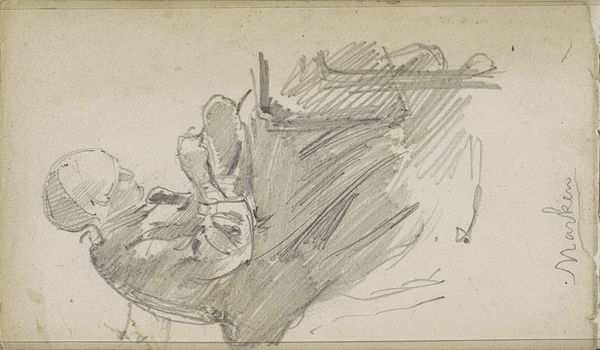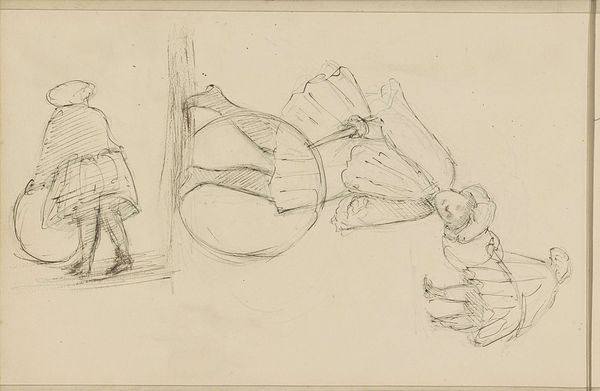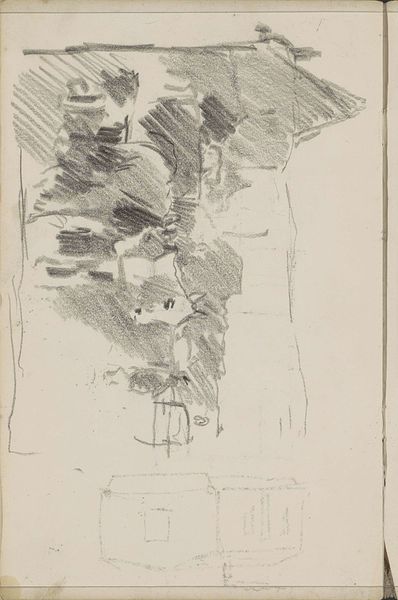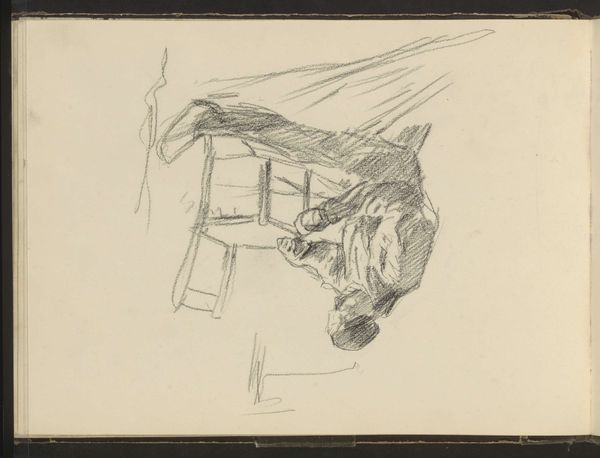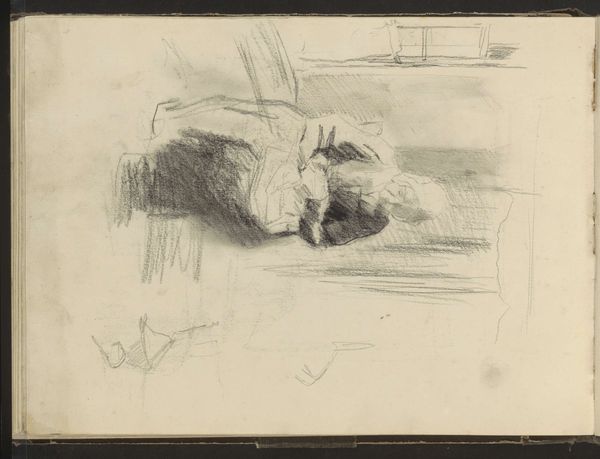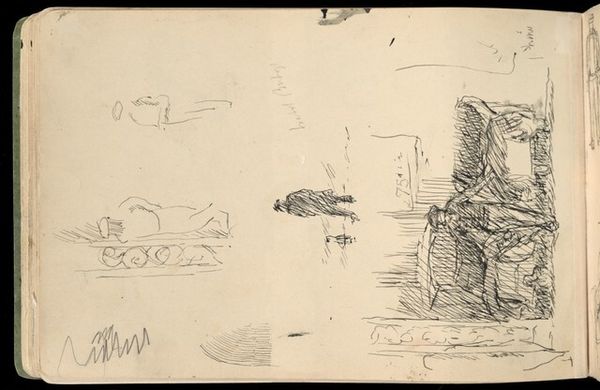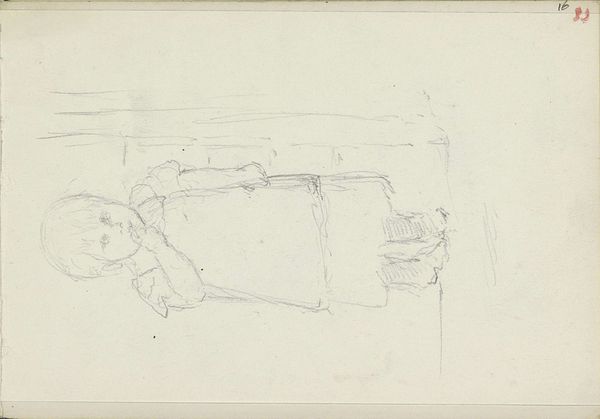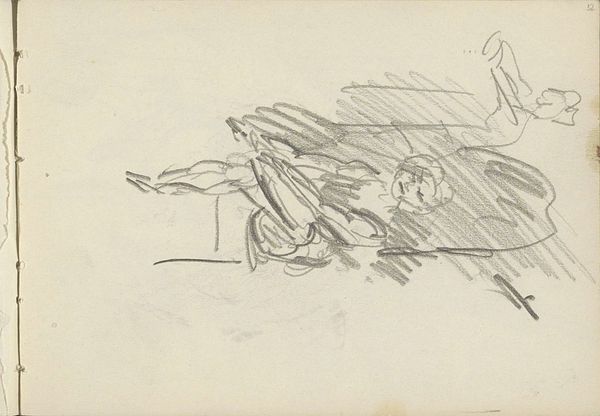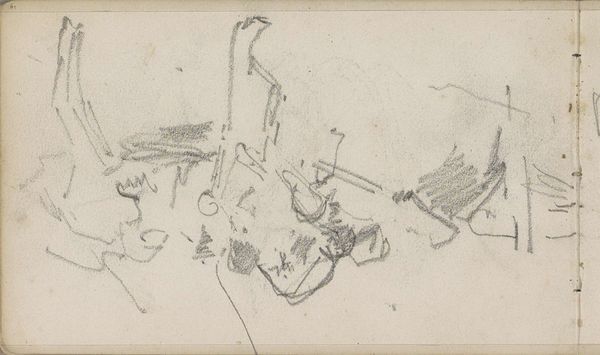
drawing, pencil
#
drawing
#
pen sketch
#
figuration
#
personal sketchbook
#
idea generation sketch
#
sketchwork
#
pen-ink sketch
#
pencil
#
pen work
#
sketchbook drawing
#
storyboard and sketchbook work
#
sketchbook art
#
initial sketch
Copyright: Rijks Museum: Open Domain
Curator: Here we have a fascinating page from the sketchbook of Carel Adolph Lion Cachet, titled "Figuurstudies," created around 1935-1940. Editor: Immediately, I’m drawn to the tentative, almost frantic quality of the lines. It feels like a fleeting moment captured, more about suggestion than precise representation. Curator: Absolutely. Cachet was known for his graphic design and printmaking, but sketches like this give us a glimpse into his artistic process, his way of visually brainstorming. It's interesting to see these private studies, typically unseen by the public, now given space within an institution like the Rijksmuseum. Editor: It raises questions about access, doesn’t it? Whose sketches get archived and displayed, and what does that say about whose voices are valued? These glimpses into the artist’s mind aren't neutral; they're shaped by curatorial decisions and the art market itself. Looking at this page from a political point of view, there seems to be a figure hunched over, maybe burdened, while other facial figures lay horizontal like someone deceased and covered in hats, as well as arms and hands like someone is conducting research? Curator: That’s a compelling reading. I'm thinking of this in the broader context of interwar Europe. While not directly representational, could these be studies for larger, potentially politically charged, works? We know Cachet was working during a time of immense social and political upheaval. Editor: And sketchbooks are inherently sites of negotiation, a space for artists to grapple with ideas. To see these studies is not just seeing the final polished art; we glimpse the artist's human side, a feeling or experience rendered and immortalized. Curator: It also shifts our understanding of skill. Often, we equate "good" art with precise rendering, but a sketch like this celebrates immediacy and raw emotion. Editor: Which can challenge established hierarchies within art history itself. These studies provide nuance, reminding us that art isn't just about grand statements; it can also be about these quiet, searching moments. It makes us confront not only this artist's journey through the political landscape but society's place within its ever-growing presence. Curator: A valuable reminder to consider not just what we see, but how we see and who enables that vision. Editor: I agree; hopefully, the Rijksmuseum continues these conversations to foster the awareness around them for other exhibits too.
Comments
No comments
Be the first to comment and join the conversation on the ultimate creative platform.
